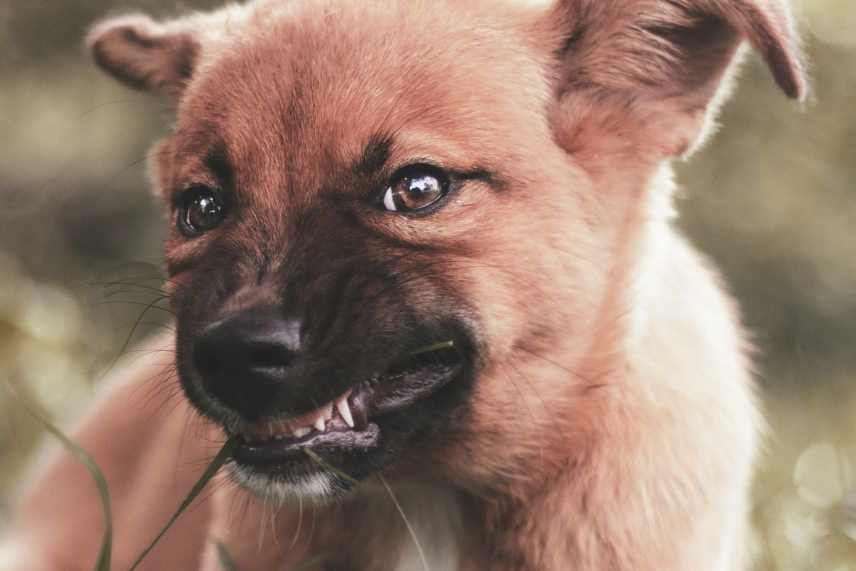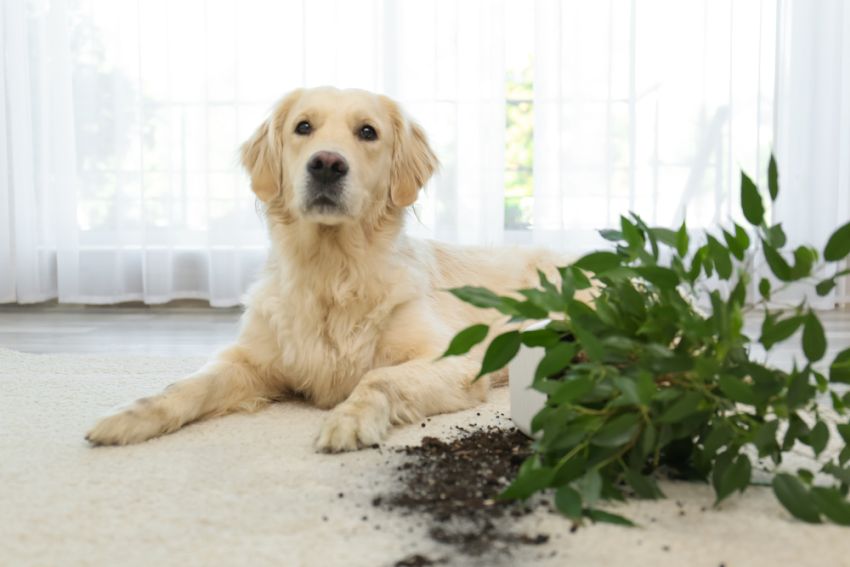If you’re a dog owner, chances are you’ve witnessed your furry friend getting a little too protective over their food, toys, or perhaps even their favorite human. This behavior, known as resource guarding, is more common than you might think and can range from mild annoyance to serious aggression.
But fear not! Understanding why dogs exhibit this behavior and knowing how to manage it can make a world of difference. Plus, there are some top-rated products out there that can help make this journey smoother for both you and your pup.
Click here for Expert Videos to Stop Dog Behavioral Problems!
What is Resource Guarding in Dogs?
Resource guarding in dogs is what it sounds like, dogs protecting what they believe is theirs from others, including other pets and humans. This can manifest through growling, snapping, or even biting when someone approaches their precious possessions.
It’s an instinctual behavior rooted in survival – in the wild, guarding their food or toys from others could mean the difference between life and starvation.
Why Do Dogs Guard Resources?
Several factors can contribute to resource guarding in dogs, including genetics, past experiences (like having to compete for food), and a lack of early socialization. It’s not necessarily a sign of a “bad dog”; rather, it’s a natural behavior that can be managed effectively with patience and the right approach.
How to Manage Resource Guarding
- Training and Socialization: Early training and socialization are key to preventing resource guarding from developing into a serious issue. Training your dog to “drop” or “leave” items on command is a good start.
- Desensitization: Gradually exposing your dog to situations that trigger guarding behavior in a controlled and positive way can help reduce their need to guard.
- Professional Help: If the behavior is severe, consulting a professional dog trainer or behaviorist is highly recommended.
*As an Amazon.com Affiliate I may earn a small commission should you buy a product featured on this page. At no extra cost to you.
Top-Rated Resource Guarding Products
While training and behavior modification are paramount, there are products out there that can support your efforts. Here’s a rundown of a few highly recommended ones:
- Interactive Feeding Toys: Toys like the Kong Wobbler or the Outward Hound Fun Feeder Slo Bowl can turn mealtime into a fun, engaging activity that reduces gulping and guarding. These toys encourage your dog to focus on getting their food in a playful manner, which can help distract them from the need to guard.
- High-Quality Training Treats: Using treats as positive reinforcement during training sessions can be highly effective. Treats like Zuke’s Mini Naturals or Wellness Soft Puppy Bites are great for rewarding your dog for non-guarding behavior.
- Professional Training Clickers: A clicker can be a powerful tool in your training arsenal. Products like the PetSafe Clik-R Trainer can help you communicate precisely with your dog during desensitization and counterconditioning exercises.
- Durable Chew Toys: Providing your dog with their own toys that they don’t feel the need to guard can also be helpful. Durable toys from brands like Nylabone or KONG are designed to withstand heavy chewing and can keep your dog occupied and away from items they’re prone to guard.
Resource guarding in dogs is a behavior that’s manageable with the right approach and tools. Understanding the reasons behind it and taking steps to address it early can lead to a happier, more harmonious relationship between you and your dog.
And with the help of some top-rated products, you can support your furry friend through their journey to become less possessive and more sociable. Remember, patience, consistency, and love are key.
Your puppy doesn’t want to feel the need to guard their resources any more than you want them to. With a little effort, you can help them feel secure and relaxed in their environment.
Click here for Expert Videos to Stop Dog Behavioral Problems!

Is Your Dog’s Resource Guarding a Risk? How to Safeguard Your Family from Potential Dangers
Resource guarding in dogs can become tricky for families, and yes, it can become dangerous if not appropriately addressed. Imagine you’re chilling on the couch, enjoying some snacks, and your furry buddy is right there with their favorite toy.
Out of the blue, your little nephew decides to join the fun and reaches for the toy, not knowing any better. If your dog is big on resource guarding, this innocent act could lead to growling, snapping, or even a bite.
It’s not just about toys or food; dogs can guard anything they consider valuable, including places like their bed or even a person they’re particularly fond of.
Here’s the lowdown on why it can be a bit of a pickle for family members:
Safety Concerns
First off, the most obvious concern is safety. When dogs feel their prized possessions are threatened, their instinctive reaction can be to protect them at all costs, which might mean using their teeth. Kids, especially, might not recognize the warning signs and can inadvertently provoke a guarding dog.
This can lead to injuries and, let’s be honest, a whole lot of stress and worry for everyone involved.
Stressful Environment
Having a dog that resource guards can create a tense atmosphere at home. Family members might start walking on eggshells around the dog, afraid to trigger a guarding response accidentally.
This can be especially tough in homes with young children who naturally want to touch and play with everything, including the dog’s stuff.
Relationship Strain
Dogs are part of the family, and when there’s constant worry about guarding behavior, it can strain the bond between your dog and the family members. Instead of interactions being filled with mutual play and affection, there might be apprehension and avoidance.
It’s not the ideal situation for building those heartwarming, Instagram-worthy moments.
How to Handle It
The good news is that resource guarding in dogs can be managed effectively with some understanding and the right approach. Here’s how:
- Education is Key: Teach everyone in the family, especially kids, about respecting the dog’s space and possessions. Explain the signs of discomfort to look out for in your dog.
- Training Together: Get the whole family involved in training sessions. This not only helps in managing guarding behavior but also strengthens the bond between your dog and all family members.
- Professional Guidance: Sometimes, it’s best to call in the pros. A certified dog trainer or a veterinary behaviorist can offer personalized advice and strategies tailored to your dog’s needs.
- Safe Zones: Create safe areas for your dog where they can enjoy their meals or toys without being disturbed. This can help reduce their need to guard.
Remember, tackling resource guarding in dogs is all about patience, consistency, and lots of positive reinforcement. It’s a team effort, and with everyone on board, your home can be a happy and safe space for both two-legged and four-legged family members.
Mastering Canine Discipline: Effective Strategies to Stop Dog Misbehavior

Stopping a dog from misbehaving requires a combination of understanding, patience, and consistent training. Addressing the root causes, providing proper training, and incorporating positive reinforcement, you can build a strong bond with your dog and ensure a well-behaved and happy companion.
Continue reading here: Effective Strategies to Stop Dog Misbehavior

